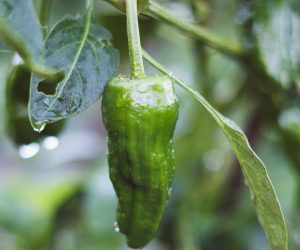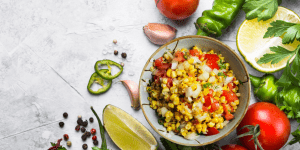
This month’s seed kit features Early Jalapeños. To support our environment, seed kits are now available digitally. Follow the links to download a planting log, delicious recipes, fun craft ideas, and coloring pages.
Early Jalapeños
Add a little spice to your life! This variety of pepper grows on compact and upright plants, making them ideal for container and limited-space gardening.
Planting Instructions
Culture: Early Jalapeño Peppers prefer warmer climates (65°F – 85°F) and will grow well in containers and small gardens. Starting seeds indoors and transplanting after the last frost is recommended. Early Jalapeño Peppers prefer well-drained, fertile soil, with a pH level between 6.0 – 7.0. Seeds will germinate in 10 – 21 days.
Starting Indoors: Sow seeds ¼ inch deep in a tray or other small container 8 weeks before the last frost, covering the container with plastic wrap if your indoor space is too cool. Transplant to a larger container (12 inches + in diameter with drainage holes) or garden when plants reach 3 inches tall.
Direct Seeding: Sow seeds outdoors 4 – 6 weeks after the last frost, ¼ inch deep in a sunny area of your garden. When plants reach 3 inches tall, thin or transplant plants to one every 18 inches.
Water: While drought resistant, for best production water regularly to keep the soil moist, but not waterlogged. Soggy roots can lead to disease, so water when the top 1 – 2 inches of soil is dry.
Harvest: Peppers will mature in 60 (green) – 80 (red, fully ripe) days. To encourage growth, pick the first peppers when they reach usable size and pinch off any flowers. Harvest peppers by cutting them from the plant using a sharp knife or scissors. For the hottest pepper, leave peppers on the vine until fully mature and the color changes to a bright red.
More About Early Jalapeños
The jalapeño pepper was in use by the Aztec peoples of Mexico long before Columbus arrived in the Americas. Named after the town of Jalapa (also spelled Xalapa), Mexico, the jalapeño is among the milder of the hot peppers and is widely used to add just the right amount of heat to a variety of dishes. Smoked, Jalapeños become the chipotle chilies that so many love.
Jalapeños are usually harvested while still green but will increase in heat and sweetness if allowed to stay on the plant until they turn red. Brownish lines that develop on some Jalapeños, called corking, are another indication of heat. Corking (and increased heat) tends to be produced when the plants are stressed.
Sources: Botanical Interest and Specialty Produce
Jalapeño Corn Salsa
Serves: 4 Prep time: 20 minutes

Ingredients:
- 3 cups of sweet corn kernels (fresh, frozen, or canned)
- 1 cup of red onion, chopped
- ½ cup of cilantro, chopped
- 2 jalapeños (seeds removed), chopped
- ¼ cup of lemon juice
- ¼ cup of lime juice
- 1 tbsp. of white wine vinegar
- ¼ tsp. of chili powder
- 1.5 tsp. of kosher salt
- ¼ tsp. of ground black pepper
Instructions:
- Combine all ingredients into a medium bowl and mix.
- Allow salsa to marinate for 30 minutes before serving.
- Serve with your favorite tortilla chips!
- The salsa can be stored in a refrigerator, covered for up to 3 - 4 days.
Craft: Rock Painted Plant Markers

You’ll Need:
- Smooth, flat rocks
- Non-toxic paint
- A paint brush
- A paint pen (optional)
- Acrylic sealer
Instructions:
- Collect rocks, especially ones shaped like fruits and vegetables you grow in your garden.
- Wash the rocks and dry them completely.
- Use a pencil to sketch your design on the top of the rock.
- Apply at least 2 coats of paint, allowing it to dry completely between coats.
- Use a paint pen or paint in a contrasting color to write the name of the fruit or vegetable.
- Apply 2 coats of acrylic sealer to all painted areas and allow to dry before placing in your garden.


Add a comment to: May 2024: Early Jalapeños